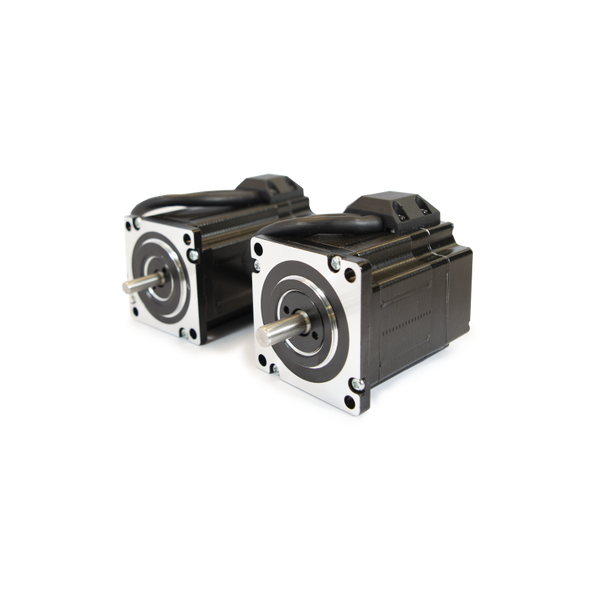
Stepper motors are pivotal components in various electromechanical systems, offering precise control over motion across a multitude of applications. Whether in 3D printers, CNC machines, robotic arms, or automated systems, stepper motors provide controlled and incremental movement, making them indispensable in modern engineering and automation.
Anatomy of a Stepper Motor
At its core, a stepper motor is an electric motor that divides a full rotation into a series of discrete steps. Unlike conventional motors, which continuously rotate when powered, stepper motors move in precise increments determined by the number of steps per revolution and the motor’s design.
Stepper motors consist of several key components:
- Rotor: The central rotating part of the motor.
- Stator: The stationary part surrounding the rotor.
- Coils: Wires wound around poles within the motor that generate electromagnetic fields.
- Permanent Magnets: Found in some designs, providing additional magnetic force.
The interaction between the electromagnetic fields generated by the coils and the permanent magnets or soft iron cores in the rotor determines the motor’s movement.
How Stepper Motors Work
Stepper motors operate based on the principle of electromagnetic induction. When electrical current flows through the coils, it generates a magnetic field, which interacts with the rotor to produce motion. By sequentially energizing the coils in a specific sequence, stepper motors move in precise increments, allowing for controlled rotation and positioning.
The two primary types of stepper motors are:
- Permanent Magnet (PM) Stepper Motors: These motors feature a permanent magnet rotor and rely on the interaction between the stator’s electromagnets and the permanent magnets to produce motion.
- Variable Reluctance (VR) Stepper Motors: VR stepper motors utilize a rotor with soft iron teeth and a stator with electromagnetic coils. As the coils are energized, the rotor aligns itself to minimize the reluctance in the magnetic circuit, resulting in controlled movement.
Advantages of Stepper Motors
Stepper motors offer several advantages over traditional motors, including:
- Precise Positioning: Stepper motors provide accurate and repeatable positioning, making them ideal for applications requiring precise control.
- Open-Loop Control: Unlike servo motors, stepper motors do not require feedback mechanisms for position control, simplifying system design and reducing costs.
- Low-Speed Torque: Stepper motors deliver high torque at low speeds, making them suitable for applications requiring high holding torque.
Applications of Stepper Motors
Stepper motors find applications across various industries, including:
- 3D Printing: Stepper motors drive the precise movement of print heads and build platforms in 3D printers, enabling layer-by-layer fabrication of complex objects.
- CNC Machining: In computer numerical control (CNC) machines, stepper motors control the movement of cutting tools and workpieces, allowing for precise machining operations.
- Robotics: Stepper motors power the joints and actuators of robotic arms, facilitating accurate and controlled movement in industrial and research settings.
- Automated Systems: Stepper motors are integral components in automated systems for conveyor belts, packaging machinery, and industrial automation, enabling precise motion control.
Conclusion
Stepper motors play a vital role in modern engineering and automation, offering precise control and positioning across a wide range of applications. Understanding the principles of operation and the advantages they offer allows engineers and designers to leverage stepper motors effectively in their designs, contributing to the advancement of technology and innovation.
References:
- “Stepper Motor Basics” by Microchip Technology Inc.
- “Stepper Motor Fundamentals” by Texas Instruments.
- “Design and Control of Stepper Motor Drives” by Jacek F. Gieras and Mohammad A. Rahman.

